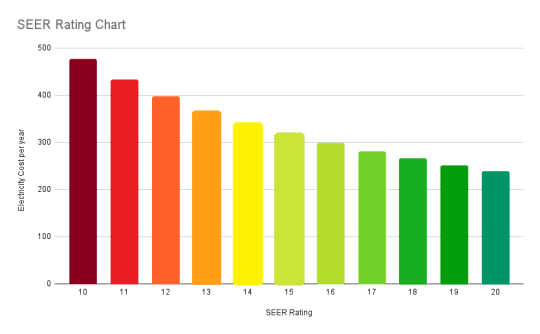Understanding SEER and EER Ratings: A Guide to Energy-Efficient HVAC

If you’ve ventured into the realm of shopping for new heating and air conditioning units, you might have encountered the often overlooked yet crucial SEER and EER ratings associated with these products. Understanding these figures can significantly aid in enhancing energy efficiency and cutting down on energy consumption.
SEER Rating
SEER stands for Seasonal Energy Efficiency Ratio. It gauges the efficiency of heating and air conditioning units over a specific period, typically a heating or cooling season. This rating provides an overview of a unit’s efficiency, aiding in projecting energy usage over prolonged durations.EER Rating
Heating and air conditioning systems also feature an EER rating, representing the Energy Efficiency Ratio. This figure offers insight into a unit’s efficiency during operation. A helpful analogy is likening it to car speeds: SEER is the average speed from point A to point B, and EER is the current speed at any given moment.A Comparison
When selecting heating and air conditioning equipment, paying attention to these ratings is crucial. While they offer distinct insights into system performance and energy usage, they share a common trait: higher ratings translate to better efficiency. However, higher efficiency often accompanies a higher price tag. The goal is to find an HVAC system that strikes a balance, ensuring the consumer reaps the benefits.Talk to Us About Your Energy Performance Goals
To determine the ideal ratings for your appliance, researching Illinois’s minimum energy efficiency requirements can be beneficial. Alternatively, reach out to our team at Optimized Air by calling (224) 338-9591. Consult us regarding energy-efficient options for your Lake County home.Read the full article
Comments
Post a Comment